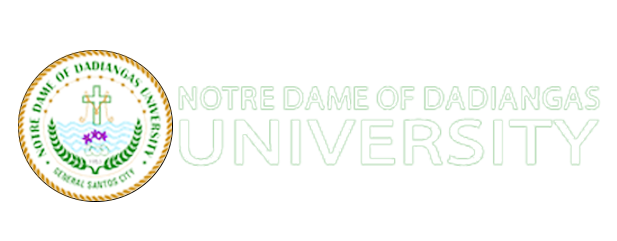This descriptive study was primarily concerned with the substance use among the adolescents in Maitum, Sarangani Province. It determined the demographic profile, extent of influential factors and perceived effects of substance use. Frequency, percentile and weighted mean were used for statistical treatment. Moreover, an intervention program was designed based on the findings of the study. Findings of the study revealed that, among adolescents, age bracket of 17-18 years old got the highest percentage of 32.9 and 37.08 while the lowest was the age bracket of 9 and 15 years old which obtained 3.75 and 6.25 percent. The gender showed that female comprised of 63.75% while male comprised only of 36.25%. In terms of grade levels, data revealed that Grade 11 got the highest percentage of 65 while the lowest was the Grade 10 which obtained 4.17%. Respondents’ hobbies include playing sports and reading books obtained the highest percentage of 22.08 and 13.3. The data also revealed that 12.08% of the respondents used alcohol and 7.08% of the respondents used cigarettes. The extent of influential factors to substance use among adolescents has a weighted mean of 1.74 which is moderate in extent. However, the extent of influential factors to substance use among adolescents on academic pressure was rarely influence them to substance use. The perceived effects of substance use among adolescents have a weighted mean of 3.98 which is highly agree/perceived. From the data analysis, conclusions were drawn that most of the respondents belong to the grade 11 with age bracket of 17-18 years old and mostly are female. Respondents’ top hobbies include playing sports, reading books and used of cellphones. Alcohol and tobacco were the commonly used substances among respondents that consider themselves as users. Encouragement of friends, parent’s substance use, social gatherings and peer pressure are influential factors that sometimes/moderately influence adolescents to substance use. Academic pressures rarely influence adolescents to substance use. Substance use was highly perceived to cause effect on health-perception, cognitive-perceptual, academic performance, sleep-rest and role-relationships. The study then recommends that there is a need to adapt and implement the Short Course Program on Awareness of Substance Use to prevent possible health risk and behavioral vices. It also recommends that the administrators and faculty of the Notre Dame of Dadiangas University may utilize the proposed program and may intensify its operation through embedment on the PGS sessions.
Introduction
Adolescents have a heightened risk for substance use. Some adolescents may experience unique challenges, making them prone to use cigarettes, alcohol and even drugs. Literature reviews of this research states that adolescents’ substance use can be a risk for themselves and may harm others. Consequences include legal, academic, mental health problems, engagement in risky behaviors, injury and death (Crowell, 2016).
Substance use touches millions of people worldwide each year. It is estimated that about 76.3 million people struggle with alcohol use disorders contributing to 1.8 million deaths per year. As this case with some global issues, substance use is unequally represented in the developing world, marginalized groups and communities being the most vulnerable to this reality. The United Nations reported that around 185 million people globally over the age of 15 were consuming cigarettes and other substances (WHO, 2018).
In the Philippines, the use of substances among adolescents is possible since use of alcohol, cigarettes and stimulants has a greater link to the use of illegal substance. Almost a thousand minors were involved in substance-related cases as of 2016 (CNN Philippines, 2016). The Republic Act No. 6425, otherwise known as the Dangerous Drugs Act of 1972 remains the governments’ agenda to drug implementation campaign on drug prevention and control. This also serves as the legal basis in implementing the law and under oath shall be responsible for the efficient and effective implementation of the law on all the provisions on any dangerous drugs, controlled precursors and essential chemicals as provided in this Act.
In Maitum, Sarangani Province, some adolescents experience difficulties and challenges that make them prone to use cigarettes and alcohol. These challenges have been an experience of some adolescents that has attributed from low education and socioeconomic poverties (Supetran,2017). The Department of Health determined that substance use is common in indigenous communities like Maitum that is particularly more vulnerable to substance and alcohol addictions. Substance use among adolescents may predict substance related problems in health. Continuous use of these substances may ruin adolescents’ life thus predisposed them in problems in health and commission of crimes.
Statement of the Problem
This study determined the substance use among adolescents. Specifically, it answered the following questions:
- What is the demographic profile of adolescents, in terms of:
1.1 age;
1.2 sex;
1.3 grade level;
1.4 hobbies and;
1.5 commonly used substance?
- What is the extent of influence of the following factors on the substance use among adolescents, in terms of:
2.1 peer pressure;
2.2 parent’s substance use;
2.3 encouragements of friends;
2.4 social gatherings and;
2.5 academic pressure?
- What is the perceived effect of substance use among adolescents, in terms of their:
3.1 health perception;
3.2 sleep rest;
3.3 cognitive-perceptual;
3.4 role relationship;
3.5 coping-stress and;
3.6 academic performance?
- Based on the findings, what intervention program can be proposed?
Research Methodology
The study followed the descriptive type of research. It described the demographic profile in terms of age, sex, grade level, hobbies and commonly used substance; extent of influential factors include peer pressure, parent’s substance use, encouragements of friends, social gatherings and academic pressure of 240 adolescents aged 15-19 years old in Maitum, Sarangani Province. The perceived effects of substance use include health perception, sleep rest, cognitive-perceptual, role relationship, coping-stress tolerance and academic performance. Data was obtained through a questionnaire and was statistically treated using frequency, percentages and mean. Based on the findings, an intervention program was made to address the health effects and concerns of the respondents.
Summary of Findings
The demographic profile of the adolescents in terms of age at the time of survey revealed that the age bracket of 17-18 years old got the highest percentage of 32.9 and 37.08 while the lowest was the age bracket of 9 and 15 years old which obtained 3.75 and 6.25 percent. The age bracket of 16 years old acquired 20 percent. The gender showed that females comprised of 63.75% while males comprised only of 36.25%. In terms of grade levels, data revealed that Grade 11 got the highest percentage of 65 while the lowest was the Grade 10 which obtained 4.17%. The Grade 12 acquired 30.83%. Respondent’s hobbies include playing sports and reading books obtained the highest percentage of 22.08 and 13.3. This was followed by the used of cellphones and dancing which obtained 11.17% and 10%. Moreover, the data revealed that 5% of the respondents do not have hobbies. The data also revealed that 12.08% of the respondents used alcohol and 7.08% of the respondents used cigarettes.
However, 80.83% of the respondents neither used alcohol and cigarettes The extent of influential factors to substance use among adolescents in terms of encouragement of friends has a weighted mean of 1.96 which is moderately influential to substance use. The parent’s substance use has a weighted mean of 1.80 which is moderately influential to substance use. The social gatherings have a weighted mean of 1.77 which is moderately influential to substance use. The peer pressure has a weighted mean of 1.76 which is moderately influential to substance use. And academic pressure has a weighted mean of 1.45 which is lowly influential to substance use. In overall result, the extent of influential factors to substance use among adolescents has a weighted mean of 1.74 which is moderate in extent. This means that on average, the extent of influential factors to substance use among adolescents on encouragement of friends, parent’s substance use, social gatherings and peer pressure were sometimes or moderately influenced them to use substances.
Moreover, the extent of influential factors to substance use among adolescents on academic pressure was rarely influence them to substance use. The perceived effects of substance use among adolescents revealed that health perception has a weighted mean of 4.30 which is very highly agree/perceived to cause effects. The cognitive-perceptual has a weighted mean of 4.28 which is very highly agree/perceived to cause effects. The academic performance has a weighted mean of 4.18 which is highly agree/perceived to cause effects. The sleep-rest has a weighted mean of 4.02 which is highly agree/perceived to cause effects. The role-relationships have a weighted mean of 3.98 which is highly agree/perceived to cause effects. The coping-stress has a weighted mean of 3.16 which is moderately agree/perceived to cause effects. In overall result, the perceived effects of substance use among adolescents have a weighted mean of 3.98 which is highly agree/perceived. This means that on average, the perceived effects to substance use among adolescents on health-perception, cognitive-perceptual, academic performance, sleep-rest and role-relationships were often/highly perceived to cause effects. However, the perceived effects of substance use among adolescents on coping-stress were moderately perceived to cause effects.
Conclusions
Based on the findings of the study, the following conclusions were drawn:
- Most of the respondents belong to the grade 11 with age bracket of 17-18 years old and mostly are females.
- Respondent’s top hobbies include playing sports, reading books and used of cellphones. However, minority of the respondents do not have hobbies.
- Alcohol and tobacco were the commonly used substances among respondents that consider themselves as users. However, majority of the respondents neither used alcohol and cigarettes.
- Encouragement of friends, parent’s substance use, social gatherings and peer pressure are influential factors that sometimes/moderately influence adolescents to substance use.
- Academic pressures rarely influence adolescents to substance use.
- Substance use was highly perceived to cause effect on health-perception, cognitive-perceptual, academic performance, sleep-rest and role-relationships.
- Coping-stress was perceived to cause moderate effect on substance use.
Recommendations
Based on the findings and conclusions of the study, the following are the recommendations:
- There is a need to adapt the Short Course Program on Awareness of Substance Use for adolescents particularly on identified grade levels and across genders.
- There is a need to implement the Short Course Program on Awareness of Substance Use to the adolescents to prevent possible health risk and for those who have substance behavioral vices.
- There is a need to embed and apply the Short Course Program on Substance Use to the Homeroom and health related subjects among adolescents. Parents and teachers may inform the objectives of the program and able to determine ways of reducing high risk individuals to substance use.
- The administrators and faculty of the Notre Dame of Dadiangas University may utilize the proposed program and may intensify its operation through embedment on the PGS sessions.
- Implementers of the program may validate the program particularly on its usefulness and effectiveness.
- Future researchers may evaluate the implementation of the Short Course Program on Awareness of and conduct similar studies on the areas of drug use and addiction and academic performance among adolescents.
References
Alcohol Rehabilitation Thailand (2018). Retrieved on September 1, 2018 from https://alcoholrehab.com/rehab-news/)
CNN Philippines (2016). The Closeup ‘Forever Summer’ concert tragedy: What we know so far? CNN Philippines. 23 May 2016. Retrieved May 28, 2018. http://cnnphilippines.com/news/2016/05/23/close-upforever-summer-concert-pasay-timeline.html
Crowell, S. (2016). Child and Adolescent Psychiatric Clinics of North America. Substance Use among College Students. Retrieved on June 6, 2018 from https://www.childpsych.theclinics.com/article/S1056- 4993(16)30064-5/abstract.
Gonzales, A. (2013). Alcohol consumption and smoking and their associations with socio-demographic characteristics, dietary patterns, and perceived academic stress in Puerto Rican college students. Health Science Journal. Retrieved from https://www.ncbi.nlm.nih.gov/pubmed/23781624 on November 4, 2018
Supetran, B. (2017). Business Mirror. Sarangani Newsletter. Retrieved on July 30, 2017 from https://businessmirror.com.ph/sarangani-comes-ofage/
[6] WHO (2018). World Health Organization: Substance Abuse. Retrieved on September 1,2018 from http://www.who.int/topics/substance_abuse/en
Zambrano, J.(2016) . LGUs-set-programs-drug-surrenderees. Philippine Information Agency – LGU. Sunstar Philippines. Retrieved on November 13, 2018 from https://www.sunstar.com.ph/article/112982


